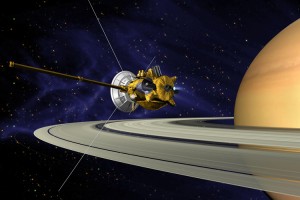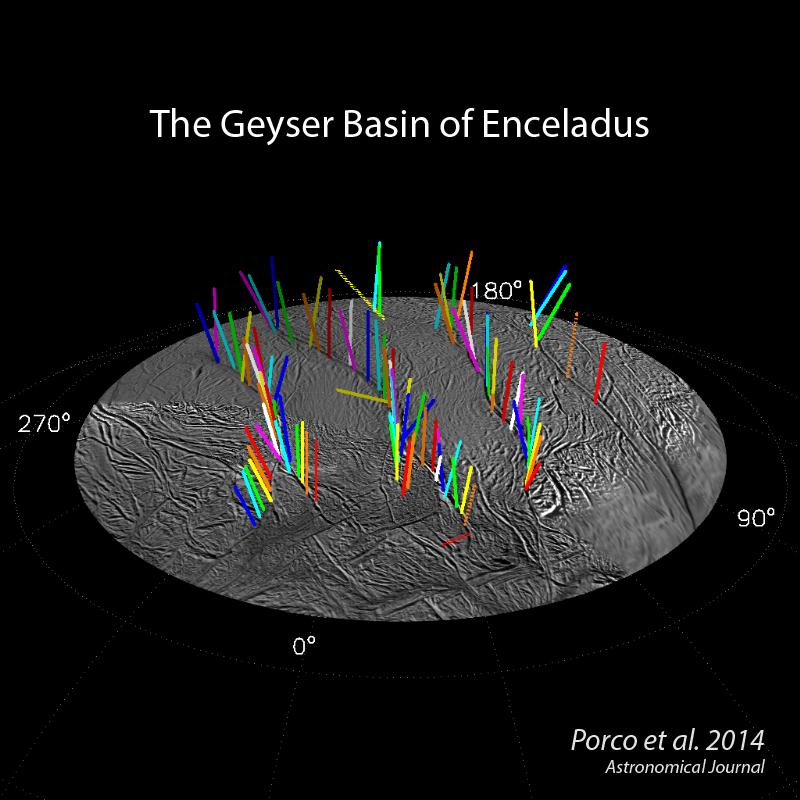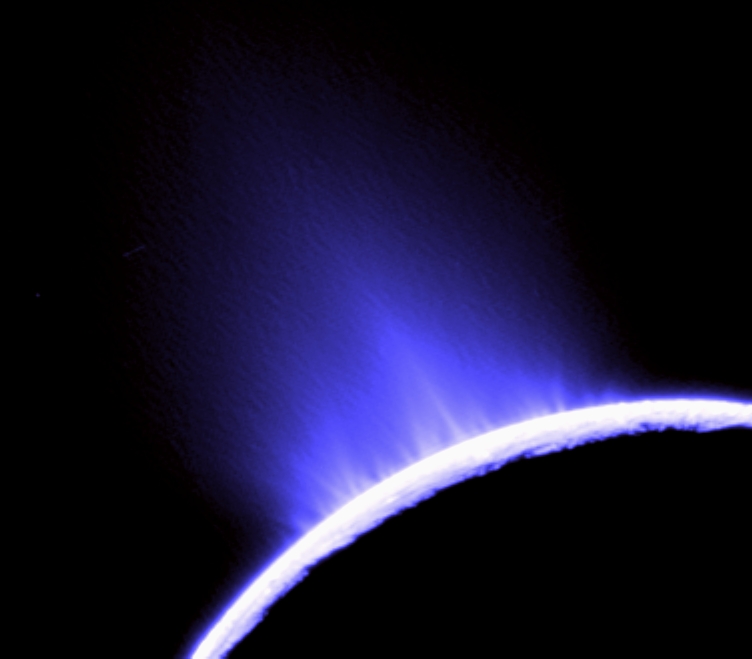Hot Water in Icy Space
Wednesday, May 17th, 2017May 17, 2017
Enceladus, an icy moon orbiting Saturn, is quickly becoming one of the hottest spots in the search for life beyond Earth. A group of scientists led by J. Hunter Waite of the Southwestern Research Institute in San Antonio, Texas, has determined that hydrothermal vents (flows of heated water) likely exist in a global ocean beneath Enceladus’s icy crust. These vents could possibly be home to life forms. Waite and his team published their findings last month in the journal Science.
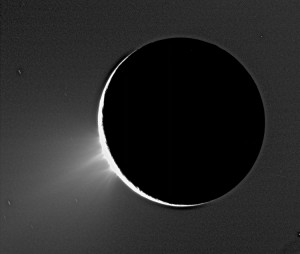
Enceladus, a moon of Saturn, contains geysers at its south polar region that spray water vapor and grains of water ice into space. Credit: NASA/JPL/Space Science Institute
Enceladus is the sixth largest moon of Saturn. Its surface, made of bright ice, makes it the most reflective object in the solar system. Like only a few known satellites, Enceladus shows signs of ongoing geological activity. Scientists have observed a plume of particles erupting from Enceladus’s south polar region. The plume is fed by several individual jets on the surface of the moon that release mostly water vapor and grains of water ice. These jets are in turn fed by a global ocean of liquid water that exists deep beneath the moon’s surface. The jets spray material onto Enceladus’s surface and into space.
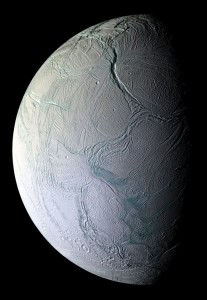
The icy surface of Enceladus, seen here in a Cassini probe image, is continually smoothed by active geysers and shows few craters. Credit: NASA/JPL/Space Science Institute
Much of what is known about the moon comes from data gathered by the Cassini spacecraft launched by the United States National Aeronautics and Space Administration (NASA) in 1997. Cassini first visited Enceladus in 2005. The ship sampled Enceladus’s geysers in 2008 and again in 2015. It detected Enceladus’s global subsurface ocean in 2015.
Waite and his coauthors analyzed the data obtained by Cassini and found molecular hydrogen (H2) in Enceladus’s plumes. Such hydrogen is thought to be rare in planetary bodies as small as Enceladus, which has a circumference of roughly 1,000 miles (1,600 kilometers), making it less than 1/6th the size of Earth’s moon. Waite and his team determined that the hydrogen most likely came from hydrothermal vents on a sea floor within Enceladus. On Earth, hydrothermal vents are places where heated water flows from the ocean floor. Some deep-sea vents support diverse and exotic communities of marine life. Certain microbes can use the heat of the water to produce energy. These microbes are in turn consumed or harbored by larger organisms. Scientists suspect that life could flourish around such vents on other planets or moons.
Cassini has revealed tantalizing details about Enceladus, but it will not be able to determine if life exists beneath the moon’s icy surface. Cassini’s mission is coming to an end because the craft is running out of fuel. Cassini is now making a series of orbits between Saturn and its nearest ring. In September, when Cassini completes these orbits, it will crash into Saturn. Even if Cassini could continue its mission, it would be unable to gather more detailed information on the moon’s water jets. When the probe was launched 20 years ago, astronomers had not yet observed Enceladus’s polar plumes, so they could not have included instruments to study it specifically. Energized by these new findings, engineers are now working to design a probe that can sample Enceladus’s jets in greater detail. Such a probe would carry instruments designed to look for and study organic (carbon-containing) molecules in the plumes to determine if the molecules came from living things.

